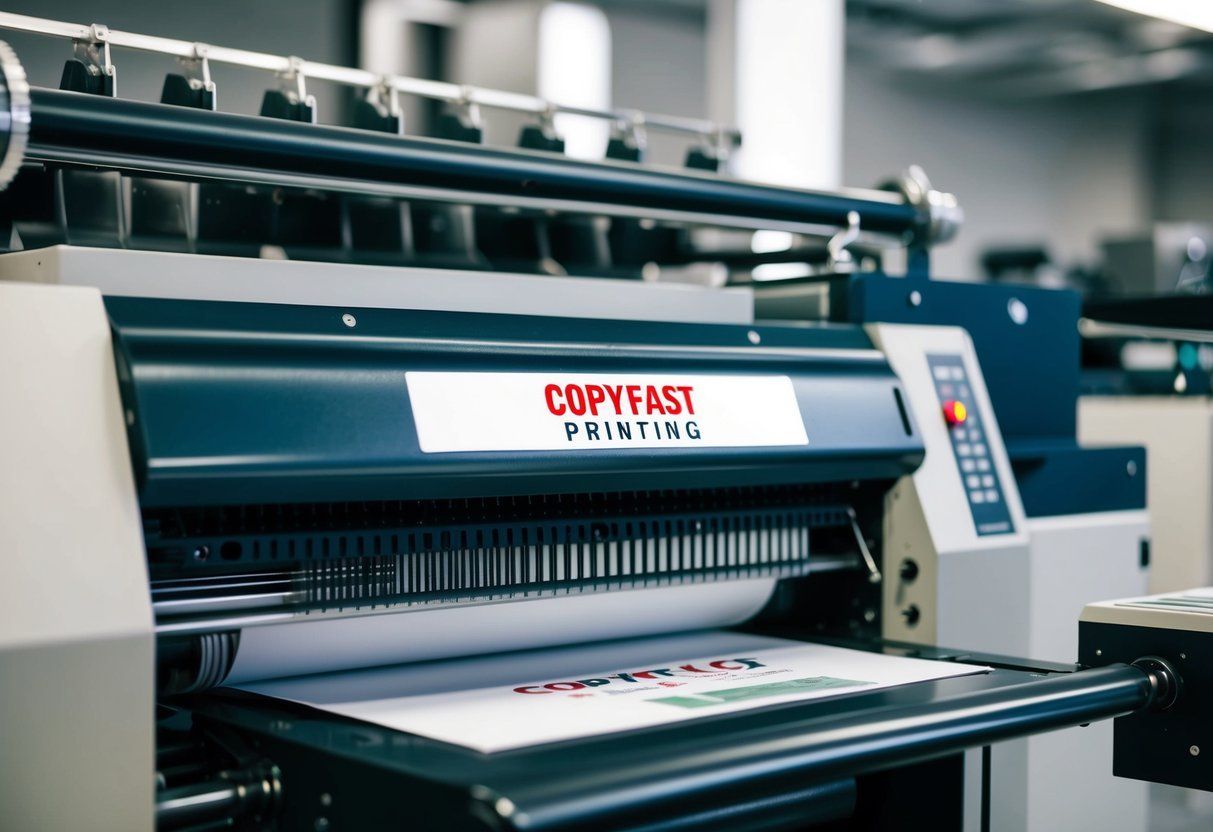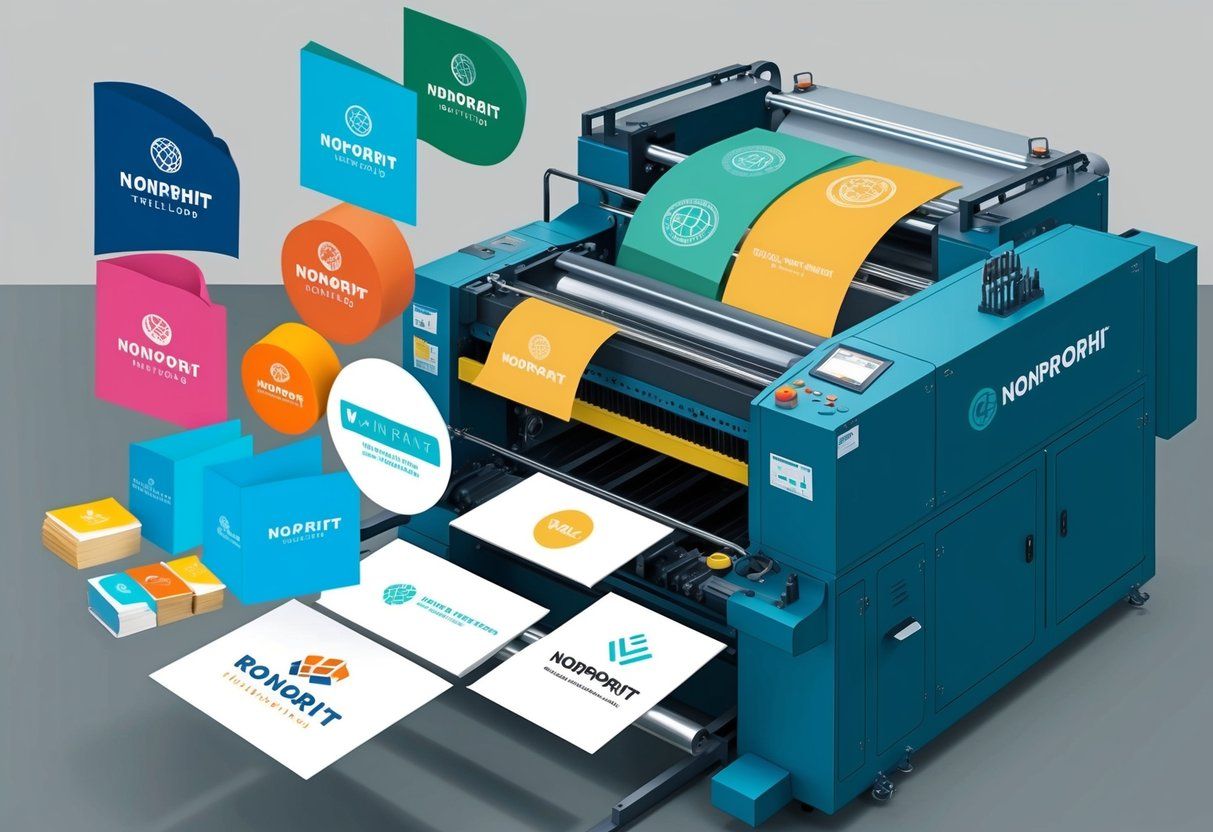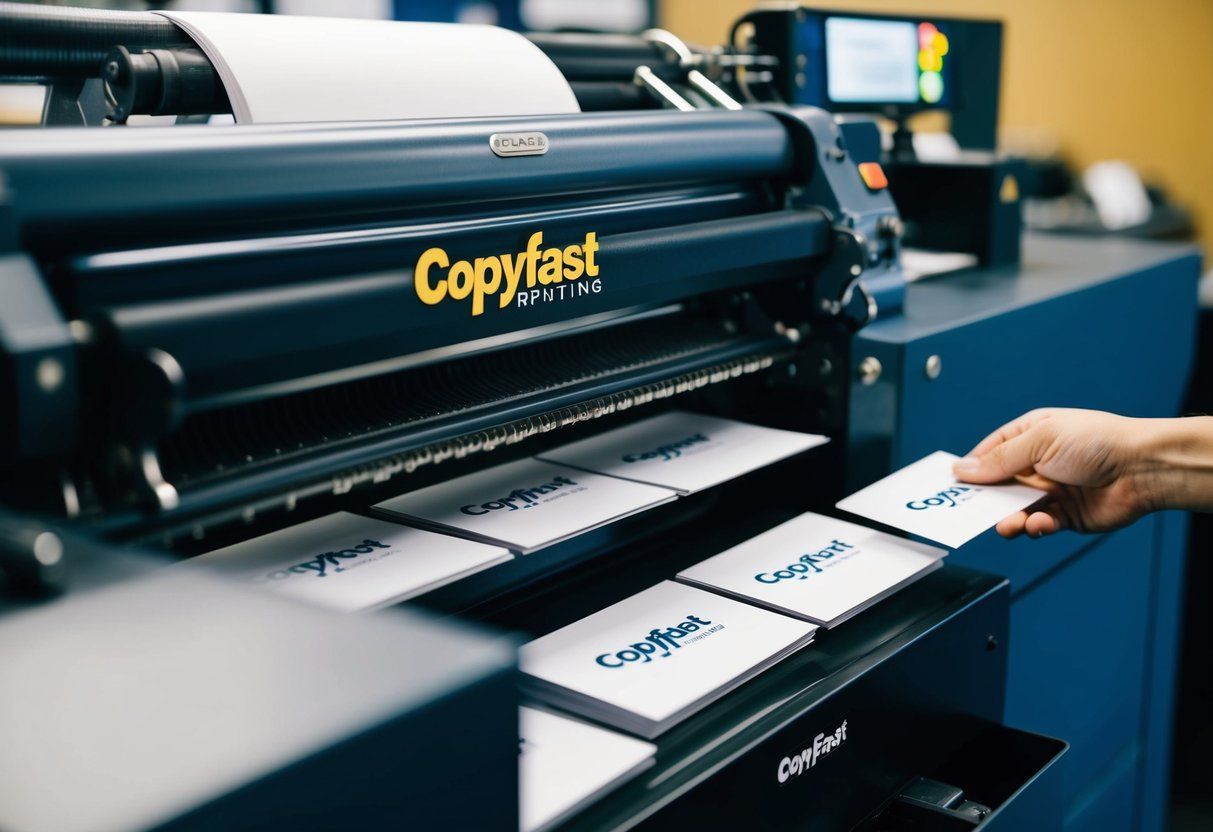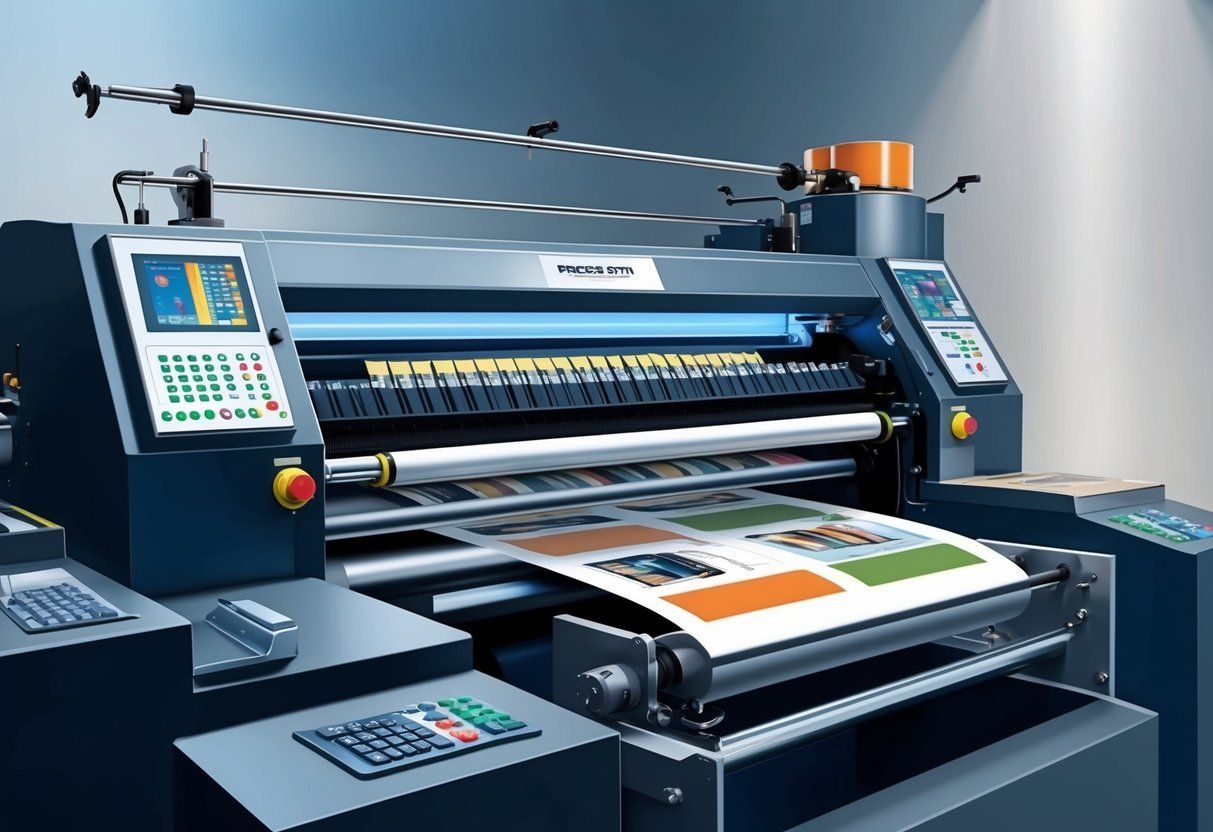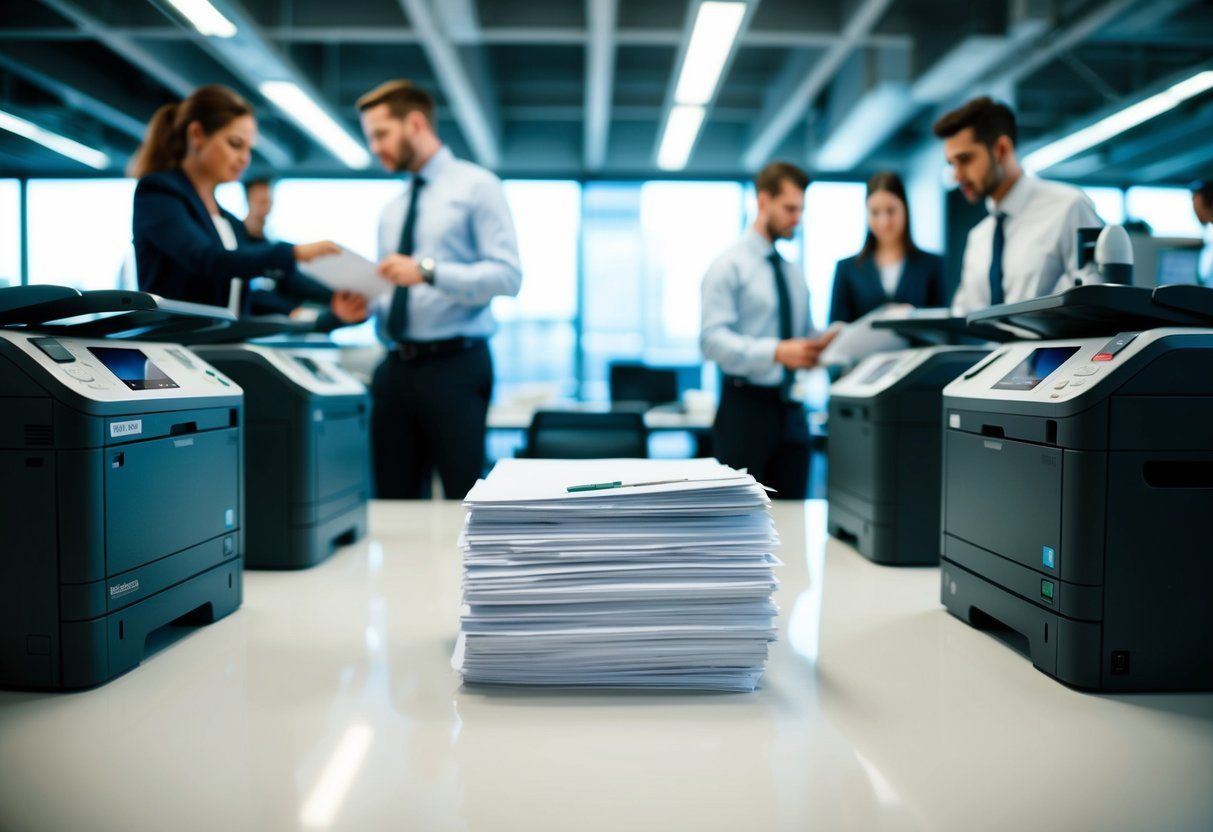Scottsdale Print Shop ) Mesa Print Shop ) Tempe Print Shop ) Phoenix Print Shop ) DC Ranch Print Shop ) Chandler Print Shop ) Peoria Print Shop ) Fountain Hills Print Shop ) Sun City Print Shop ) Glendale Print Shop ) Paradise Valley Print Shop ) Goodyear Print Shop ) Queen Creek Print Shop ) Avondale Print Shop ) Desert Ridge Print Shop ) Apache Junction Print Shop ) North Scottsdale Print Shop ) Pinnacle Peak Print Shop ) Grayawk Print Shop ) Kierland Print Shop ) Windsong Print Shop ) Mcdowell Mountain Ranch Print Shop ) Gainey Ranch Print Shop ) McCormick Ranch Print Shop ) Deer Valley Print Shop ) Arcadia Print Shop ) Troon Print Shop ) Silverleaf Print Shop ) Cave Creek Print Shop ) Old Town Print Shop ) South Scottsdale Print Shop ) Ancala Print Shop ) Central Phoenix Print Shop ) Carefree Print Shop ) Toleson Print Shop ) Ironwood Village Print Shop ) WIndgate Ranch Print Shop ) Northsight Print Shop ) Shea Print Shop ) Tatum Ranch Print Shop ) Casa Grande Print Shop ) Gilbert Print Shop ) Suprise Print Shop ) Buckeye Print Shop ) Scottsdale Banner Printing ) Mesa Banner Printing ) Tempe Banner Printing ) Phoenix Banner Printing ) DC Ranch Banner Printing ) Chandler Banner Printing ) Peoria Banner Printing ) Fountain Hills Banner Printing ) Sun City Banner Printing ) Glendale Banner Printing ) Paradise Valley Banner Printing ) Goodyear Banner Printing ) Queen Creek Banner Printing ) Avondale Banner Printing ) Desert Ridge Banner Printing ) Apache Junction Banner Printing ) North Scottsdale Banner Printing ) Pinnacle Peak Banner Printing ) Grayawk Banner Printing ) Kierland Banner Printing ) Windsong Banner Printing ) Mcdowell Mountain Ranch Banner Printing ) Gainey Ranch Banner Printing ) McCormick Ranch Banner Printing ) Deer Valley Banner Printing ) Arcadia Banner Printing ) Troon Banner Printing ) Silverleaf Banner Printing ) Cave Creek Banner Printing ) Old Town Banner Printing ) South Scottsdale Banner Printing ) Ancala Banner Printing ) Central Phoenix Banner Printing ) Carefree Banner Printing ) Toleson Banner Printing ) Ironwood Village Banner Printing ) WIndgate Ranch Banner Printing ) Northsight Banner Printing ) Shea Banner Printing ) Tatum Ranch Banner Printing ) Casa Grande Banner Printing ) Gilbert Banner Printing ) Suprise Banner Printing ) Buckeye Banner Printing ) Scottsdale Book Binding ) Mesa Book Binding ) Tempe Book Binding ) Phoenix Book Binding ) DC Ranch Book Binding ) Chandler Book Binding ) Peoria Book Binding ) Fountain Hills Book Binding ) Sun City Book Binding ) Glendale Book Binding ) Paradise Valley Book Binding ) Goodyear Book Binding ) Queen Creek Book Binding ) Avondale Book Binding ) Desert Ridge Book Binding ) Apache Junction Book Binding ) North Scottsdale Book Binding ) Pinnacle Peak Book Binding ) Grayawk Book Binding ) Kierland Book Binding ) Windsong Book Binding ) Mcdowell Mountain Ranch Book Binding ) Gainey Ranch Book Binding ) McCormick Ranch Book Binding ) Deer Valley Book Binding ) Arcadia Book Binding ) Troon Book Binding ) Silverleaf Book Binding ) Cave Creek Book Binding ) Old Town Book Binding ) South Scottsdale Book Binding ) Ancala Book Binding ) Central Phoenix Book Binding ) Carefree Book Binding ) Toleson Book Binding ) Ironwood Village Book Binding ) WIndgate Ranch Book Binding ) Northsight Book Binding ) Shea Book Binding ) Tatum Ranch Book Binding ) Casa Grande Book Binding ) Gilbert Book Binding ) Suprise Book Binding ) Buckeye Book Binding ) Scottsdale Booklet Printing ) Mesa Booklet Printing ) Tempe Booklet Printing ) Phoenix Booklet Printing ) DC Ranch Booklet Printing ) Chandler Booklet Printing ) Peoria Booklet Printing ) Fountain Hills Booklet Printing ) Sun City Booklet Printing ) Glendale Booklet Printing ) Paradise Valley Booklet Printing ) Goodyear Booklet Printing ) Queen Creek Booklet Printing ) Avondale Booklet Printing ) Desert Ridge Booklet Printing ) Apache Junction Booklet Printing ) North Scottsdale Booklet Printing ) Pinnacle Peak Booklet Printing ) Grayawk Booklet Printing ) Kierland Booklet Printing ) Windsong Booklet Printing ) Mcdowell Mountain Ranch Booklet Printing ) Gainey Ranch Booklet Printing ) McCormick Ranch Booklet Printing ) Deer Valley Booklet Printing ) Arcadia Booklet Printing ) Troon Booklet Printing ) Silverleaf Booklet Printing ) Cave Creek Booklet Printing ) Old Town Booklet Printing ) South Scottsdale Booklet Printing ) Ancala Booklet Printing ) Central Phoenix Booklet Printing ) Carefree Booklet Printing ) Toleson Booklet Printing ) Ironwood Village Booklet Printing ) WIndgate Ranch Booklet Printing ) Northsight Booklet Printing ) Shea Booklet Printing ) Tatum Ranch Booklet Printing ) Casa Grande Booklet Printing ) Gilbert Booklet Printing ) Suprise Booklet Printing ) Buckeye Booklet Printing ) Scottsdale Brochure Printing ) Mesa Brochure Printing ) Tempe Brochure Printing ) Phoenix Brochure Printing ) DC Ranch Brochure Printing ) Chandler Brochure Printing ) Peoria Brochure Printing ) Fountain Hills Brochure Printing ) Sun City Brochure Printing ) Glendale Brochure Printing ) Paradise Valley Brochure Printing ) Goodyear Brochure Printing ) Queen Creek Brochure Printing ) Avondale Brochure Printing ) Desert Ridge Brochure Printing ) Apache Junction Brochure Printing ) North Scottsdale Brochure Printing ) Pinnacle Peak Brochure Printing ) Grayawk Brochure Printing ) Kierland Brochure Printing ) Windsong Brochure Printing ) Mcdowell Mountain Ranch Brochure Printing ) Gainey Ranch Brochure Printing ) McCormick Ranch Brochure Printing ) Deer Valley Brochure Printing ) Arcadia Brochure Printing ) Troon Brochure Printing ) Silverleaf Brochure Printing ) Cave Creek Brochure Printing ) Old Town Brochure Printing ) South Scottsdale Brochure Printing ) Ancala Brochure Printing ) Central Phoenix Brochure Printing ) Carefree Brochure Printing ) Toleson Brochure Printing ) Ironwood Village Brochure Printing ) WIndgate Ranch Brochure Printing ) Northsight Brochure Printing ) Shea Brochure Printing ) Tatum Ranch Brochure Printing ) Casa Grande Brochure Printing ) Gilbert Brochure Printing ) Suprise Brochure Printing ) Buckeye Brochure Printing ) Scottsdale Business Card Printing ) Mesa Business Card Printing ) Tempe Business Card Printing ) Phoenix Business Card Printing ) DC Ranch Business Card Printing ) Chandler Business Card Printing ) Peoria Business Card Printing ) Fountain Hills Business Card Printing ) Sun City Business Card Printing ) Glendale Business Card Printing ) Paradise Valley Business Card Printing ) Goodyear Business Card Printing ) Queen Creek Business Card Printing ) Avondale Business Card Printing ) Desert Ridge Business Card Printing ) Apache Junction Business Card Printing ) North Scottsdale Business Card Printing ) Pinnacle Peak Business Card Printing ) Grayawk Business Card Printing ) Kierland Business Card Printing ) Windsong Business Card Printing ) Mcdowell Mountain Ranch Business Card Printing ) Gainey Ranch Business Card Printing ) McCormick Ranch Business Card Printing ) Deer Valley Business Card Printing ) Arcadia Business Card Printing ) Troon Business Card Printing ) Silverleaf Business Card Printing ) Cave Creek Business Card Printing ) Old Town Business Card Printing ) South Scottsdale Business Card Printing ) Ancala Business Card Printing ) Central Phoenix Business Card Printing ) Carefree Business Card Printing ) Toleson Business Card Printing ) Ironwood Village Business Card Printing ) WIndgate Ranch Business Card Printing ) Northsight Business Card Printing ) Shea Business Card Printing ) Tatum Ranch Business Card Printing ) Casa Grande Business Card Printing ) Gilbert Business Card Printing ) Suprise Business Card Printing ) Buckeye Business Card Printing ) Scottsdale Catalog Printing ) Mesa Catalog Printing ) Tempe Catalog Printing ) Phoenix Catalog Printing ) DC Ranch Catalog Printing ) Chandler Catalog Printing ) Peoria Catalog Printing ) Fountain Hills Catalog Printing ) Sun City Catalog Printing ) Glendale Catalog Printing ) Paradise Valley Catalog Printing ) Goodyear Catalog Printing ) Queen Creek Catalog Printing ) Avondale Catalog Printing ) Desert Ridge Catalog Printing ) Apache Junction Catalog Printing ) North Scottsdale Catalog Printing ) Pinnacle Peak Catalog Printing ) Grayawk Catalog Printing ) Kierland Catalog Printing ) Windsong Catalog Printing ) Mcdowell Mountain Ranch Catalog Printing ) Gainey Ranch Catalog Printing ) McCormick Ranch Catalog Printing ) Deer Valley Catalog Printing ) Arcadia Catalog Printing ) Troon Catalog Printing ) Silverleaf Catalog Printing ) Cave Creek Catalog Printing ) Old Town Catalog Printing ) South Scottsdale Catalog Printing ) Ancala Catalog Printing ) Central Phoenix Catalog Printing ) Carefree Catalog Printing ) Toleson Catalog Printing ) Ironwood Village Catalog Printing ) WIndgate Ranch Catalog Printing ) Northsight Catalog Printing ) Shea Catalog Printing ) Tatum Ranch Catalog Printing ) Casa Grande Catalog Printing ) Gilbert Catalog Printing ) Suprise Catalog Printing ) Buckeye Catalog Printing ) Scottsdale Commercial Printing ) Mesa Commercial Printing ) Tempe Commercial Printing ) Phoenix Commercial Printing ) DC Ranch Commercial Printing ) Chandler Commercial Printing ) Peoria Commercial Printing ) Fountain Hills Commercial Printing ) Sun City Commercial Printing ) Glendale Commercial Printing ) Paradise Valley Commercial Printing ) Goodyear Commercial Printing ) Queen Creek Commercial Printing ) Avondale Commercial Printing ) Desert Ridge Commercial Printing ) Apache Junction Commercial Printing ) North Scottsdale Commercial Printing ) Pinnacle Peak Commercial Printing ) Grayawk Commercial Printing ) Kierland Commercial Printing ) Windsong Commercial Printing ) Mcdowell Mountain Ranch Commercial Printing ) Gainey Ranch Commercial Printing ) McCormick Ranch Commercial Printing ) Deer Valley Commercial Printing ) Arcadia Commercial Printing ) Troon Commercial Printing ) Silverleaf Commercial Printing ) Cave Creek Commercial Printing ) Old Town Commercial Printing ) South Scottsdale Commercial Printing ) Ancala Commercial Printing ) Central Phoenix Commercial Printing ) Carefree Commercial Printing ) Toleson Commercial Printing ) Ironwood Village Commercial Printing ) WIndgate Ranch Commercial Printing ) Northsight Commercial Printing ) Shea Commercial Printing ) Tatum Ranch Commercial Printing ) Casa Grande Commercial Printing ) Gilbert Commercial Printing ) Suprise Commercial Printing ) Buckeye Commercial Printing ) Scottsdale Coroplast Signs ) Mesa Coroplast Signs ) Tempe Coroplast Signs ) Phoenix Coroplast Signs ) Scottsdale Digital Printing ) Mesa Digital Printing ) Tempe Digital Printing ) Phoenix Digital Printing ) DC Ranch Digital Printing ) Chandler Digital Printing ) Peoria Digital Printing ) Fountain Hills Digital Printing ) Sun City Digital Printing ) Glendale Digital Printing ) Paradise Valley Digital Printing ) Goodyear Digital Printing ) Queen Creek Digital Printing ) Avondale Digital Printing ) Desert Ridge Digital Printing ) Apache Junction Digital Printing ) North Scottsdale Digital Printing ) Pinnacle Peak Digital Printing ) Grayawk Digital Printing ) Kierland Digital Printing ) Windsong Digital Printing ) Mcdowell Mountain Ranch Digital Printing ) Gainey Ranch Digital Printing ) McCormick Ranch Digital Printing ) Deer Valley Digital Printing ) Arcadia Digital Printing ) Troon Digital Printing ) Silverleaf Digital Printing ) Cave Creek Digital Printing ) Old Town Digital Printing ) South Scottsdale Digital Printing ) Ancala Digital Printing ) Central Phoenix Digital Printing ) Carefree Digital Printing ) Toleson Digital Printing ) Ironwood Village Digital Printing ) WIndgate Ranch Digital Printing ) Northsight Digital Printing ) Shea Digital Printing ) Tatum Ranch Digital Printing ) Casa Grande Digital Printing ) Gilbert Digital Printing ) Suprise Digital Printing ) Buckeye Digital Printing ) Scottsdale Direct Mailing Services ) Mesa Direct Mailing Services ) Tempe Direct Mailing Services ) Phoenix Direct Mailing Services ) DC Ranch Direct Mailing Services ) Chandler Direct Mailing Services ) Peoria Direct Mailing Services ) Fountain Hills Direct Mailing Services ) Sun City Direct Mailing Services ) Glendale Direct Mailing Services ) Paradise Valley Direct Mailing Services ) Goodyear Direct Mailing Services ) Queen Creek Direct Mailing Services ) Avondale Direct Mailing Services ) Desert Ridge Direct Mailing Services ) Apache Junction Direct Mailing Services ) North Scottsdale Direct Mailing Services ) Pinnacle Peak Direct Mailing Services ) Grayawk Direct Mailing Services ) Kierland Direct Mailing Services ) Windsong Direct Mailing Services ) Mcdowell Mountain Ranch Direct Mailing Services ) Gainey Ranch Direct Mailing Services ) McCormick Ranch Direct Mailing Services ) Deer Valley Direct Mailing Services ) Arcadia Direct Mailing Services ) Troon Direct Mailing Services ) Silverleaf Direct Mailing Services ) Cave Creek Direct Mailing Services ) Old Town Direct Mailing Services ) South Scottsdale Direct Mailing Services ) Ancala Direct Mailing Services ) Central Phoenix Direct Mailing Services ) Carefree Direct Mailing Services ) Toleson Direct Mailing Services ) Ironwood Village Direct Mailing Services ) WIndgate Ranch Direct Mailing Services ) Northsight Direct Mailing Services ) Shea Direct Mailing Services ) Tatum Ranch Direct Mailing Services ) Casa Grande Direct Mailing Services ) Gilbert Direct Mailing Services ) Suprise Direct Mailing Services ) Buckeye Direct Mailing Services ) Scottsdale Flyer Printing ) Mesa Flyer Printing ) Tempe Flyer Printing ) Phoenix Flyer Printing ) DC Ranch Flyer Printing ) Chandler Flyer Printing ) Peoria Flyer Printing ) Fountain Hills Flyer Printing ) Sun City Flyer Printing ) Glendale Flyer Printing ) Paradise Valley Flyer Printing ) Goodyear Flyer Printing ) Queen Creek Flyer Printing ) Avondale Flyer Printing ) Desert Ridge Flyer Printing ) Apache Junction Flyer Printing ) North Scottsdale Flyer Printing ) Pinnacle Peak Flyer Printing ) Grayawk Flyer Printing ) Kierland Flyer Printing ) Windsong Flyer Printing ) Mcdowell Mountain Ranch Flyer Printing ) Gainey Ranch Flyer Printing ) McCormick Ranch Flyer Printing ) Deer Valley Flyer Printing ) Arcadia Flyer Printing ) Troon Flyer Printing ) Silverleaf Flyer Printing ) Cave Creek Flyer Printing ) Old Town Flyer Printing ) South Scottsdale Flyer Printing ) Ancala Flyer Printing ) Central Phoenix Flyer Printing ) Carefree Flyer Printing ) Toleson Flyer Printing ) Ironwood Village Flyer Printing ) WIndgate Ranch Flyer Printing ) Northsight Flyer Printing ) Shea Flyer Printing ) Tatum Ranch Flyer Printing ) Casa Grande Flyer Printing ) Gilbert Flyer Printing ) Suprise Flyer Printing ) Buckeye Flyer Printing ) Scottsdale Graphic Design ) Mesa Graphic Design ) Tempe Graphic Design ) Phoenix Graphic Design ) DC Ranch Graphic Design ) Chandler Graphic Design ) Peoria Graphic Design ) Fountain Hills Graphic Design ) Sun City Graphic Design ) Glendale Graphic Design ) Paradise Valley Graphic Design ) Goodyear Graphic Design ) Queen Creek Graphic Design ) Avondale Graphic Design ) Desert Ridge Graphic Design ) Apache Junction Graphic Design ) North Scottsdale Graphic Design ) Pinnacle Peak Graphic Design ) Grayawk Graphic Design ) Kierland Graphic Design ) Windsong Graphic Design ) Mcdowell Mountain Ranch Graphic Design ) Gainey Ranch Graphic Design ) McCormick Ranch Graphic Design ) Deer Valley Graphic Design ) Arcadia Graphic Design ) Troon Graphic Design ) Silverleaf Graphic Design ) Cave Creek Graphic Design ) Old Town Graphic Design ) South Scottsdale Graphic Design ) Ancala Graphic Design ) Central Phoenix Graphic Design ) Carefree Graphic Design ) Toleson Graphic Design ) Ironwood Village Graphic Design ) WIndgate Ranch Graphic Design ) Northsight Graphic Design ) Shea Graphic Design ) Tatum Ranch Graphic Design ) Casa Grande Graphic Design ) Gilbert Graphic Design ) Suprise Graphic Design ) Buckeye Graphic Design ) Scottsdale Large Format Printing ) Mesa Large Format Printing ) Tempe Large Format Printing ) Phoenix Large Format Printing ) DC Ranch Large Format Printing ) Chandler Large Format Printing ) Peoria Large Format Printing ) Fountain Hills Large Format Printing ) Sun City Large Format Printing ) Glendale Large Format Printing ) Paradise Valley Large Format Printing ) Goodyear Large Format Printing ) Peoria Postcard Printing ) Fountain Hills Postcard Printing ) Sun City Postcard Printing ) Glendale Postcard Printing ) Paradise Valley Postcard Printing ) Goodyear Postcard Printing ) Queen Creek Postcard Printing ) Avondale Postcard Printing ) Desert Ridge Postcard Printing ) Apache Junction Postcard Printing ) North Scottsdale Postcard Printing ) Pinnacle Peak Postcard Printing ) Grayawk Postcard Printing ) Kierland Postcard Printing ) Windsong Postcard Printing ) Mcdowell Mountain Ranch Postcard Printing ) Gainey Ranch Postcard Printing ) McCormick Ranch Postcard Printing ) Deer Valley Postcard Printing ) Arcadia Postcard Printing ) Troon Postcard Printing ) Silverleaf Postcard Printing ) Cave Creek Postcard Printing ) Old Town Postcard Printing ) South Scottsdale Postcard Printing ) Ancala Postcard Printing ) Central Phoenix Postcard Printing ) Carefree Postcard Printing ) Toleson Postcard Printing ) Ironwood Village Postcard Printing ) WIndgate Ranch Postcard Printing ) Northsight Postcard Printing ) Shea Postcard Printing ) Tatum Ranch Postcard Printing ) Casa Grande Postcard Printing ) Gilbert Postcard Printing ) Suprise Postcard Printing ) Buckeye Postcard Printing ) Scottsdale Poster Printing ) Mesa Poster Printing ) Tempe Poster Printing ) Phoenix Poster Printing ) DC Ranch Poster Printing ) Chandler Poster Printing ) Peoria Poster Printing ) Fountain Hills Poster Printing ) Sun City Poster Printing ) Glendale Poster Printing ) Paradise Valley Poster Printing ) Goodyear Poster Printing ) Queen Creek Poster Printing ) Avondale Poster Printing ) Desert Ridge Poster Printing ) Apache Junction Poster Printing ) North Scottsdale Poster Printing ) Pinnacle Peak Poster Printing ) Grayawk Poster Printing ) Kierland Poster Printing ) Windsong Poster Printing ) Mcdowell Mountain Ranch Poster Printing ) Gainey Ranch Poster Printing ) McCormick Ranch Poster Printing ) Deer Valley Poster Printing ) Arcadia Poster Printing ) Troon Poster Printing ) Silverleaf Poster Printing ) Cave Creek Poster Printing ) Old Town Poster Printing ) South Scottsdale Poster Printing ) Ancala Poster Printing ) Central Phoenix Poster Printing ) Carefree Poster Printing ) Toleson Poster Printing ) Ironwood Village Poster Printing ) WIndgate Ranch Poster Printing ) Northsight Poster Printing ) Shea Poster Printing ) Tatum Ranch Poster Printing ) Casa Grande Poster Printing ) Gilbert Poster Printing ) Suprise Poster Printing ) Buckeye Poster Printing ) Scottsdale Promotional Items Printing )
Digital Printing Advancements: Navigating the Future of Print Technology
Digital printing has revolutionized the way we approach printing, offering an alternative to traditional analog methods. This process involves translating a digital image directly onto a variety of media, providing distinct advantages in speed and efficiency. The rapid advancement of digital printing technologies, paired with innovative digital inks and substrates, has expanded the realm of possibilities in the printing industry. As businesses continue to seek cost-effective and high-quality printing solutions, digital printing stands out as a versatile option, capable of producing sharp, vibrant prints on demand.
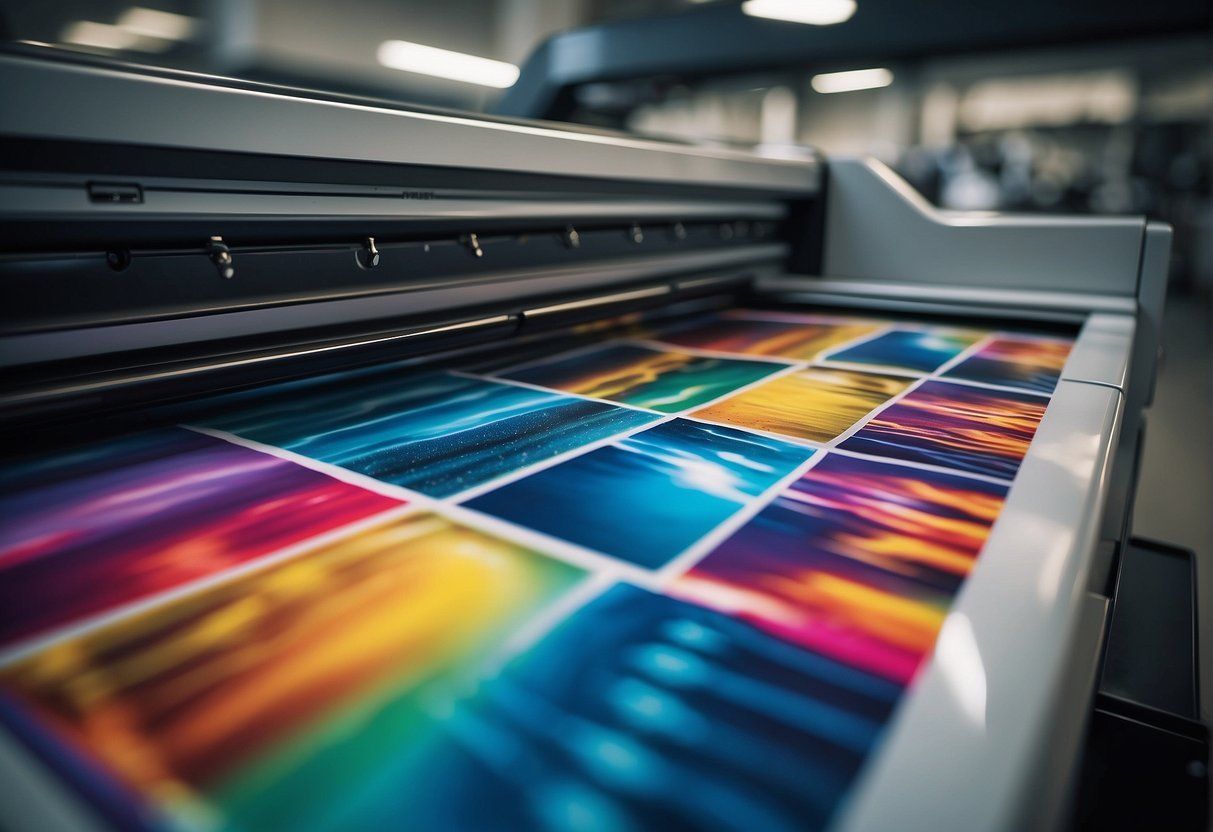
The versatility of digital printing can be seen in its wide range of applications across different industries, including marketing, publishing, and textiles. It accommodates short runs and personalized prints, making it ideal for custom orders and just-in-time production. As digital printing continues to evolve, it shapes the future of print media and opens doors to new business models and creative opportunities.
Key Takeaways
- Digital printing provides quick and efficient transfer of digital images to various media.
- It supports a wide array of applications due to its adaptability and customizable nature.
- The digital printing industry is characterized by continuous innovation and expanding business potential.
Digital Printing Fundamentals
Digital printing revolves around the production of digital images on physical surfaces. As a game-changer in the realm of print, it has ushered in an era of high-quality prints with speed and precision.
History and Evolution of Digital Printing
The inception of digital printing can be traced back to the 1960s with the introduction of photocopiers and the first laser printer in 1969. Over time, the industry evolved with the development of inkjet printers in the late 1980s. Today, digital presses integrate advancements in image quality, speed, and substrate versatility, allowing for a rapid transformation from digital files to finished products.
Basic Principles of Digital Printing
Digital printing primarily operates through two technologies: inkjet and laser printing .
- Inkjet printers create images by propelling droplets of ink onto paper and other substrates. They are renowned for their capability to produce full-color, high-quality prints encompassing a vast gamut of hues and tonalities.
- Laser printers, on the other hand, use toner adhered to the substrate through a combination of heat and pressure. They are preferred for their precision, efficiency, and the sharp quality of text and images they can produce.
Digital printing machines differ from traditional presses in that they require no printing plates. Instead, they rely on digital files such as PDFs, which streamline the printing process and enable on-demand printing with less waste and higher consistency.
Digital Printing Technologies
In the realm of digital printing, two dominant technologies stand out for their efficiency and quality: inkjet and laser printing. These methods have revolutionized the way both text and images are transferred to a variety of media.
Inkjet Printers
Inkjet printers operate by propelling droplets of ink onto paper through print heads . They are highly versatile, making them suitable for a wide range of printing needs, from simple documents to high-quality photographs. Inkjet printers make use of a spectrum of ink colors, typically cyan, magenta, yellow, and black (CMYK), to produce a full array of hues.
- Print Speed : Inkjet printers can vary, but generally speaking, have slower print speeds compared to laser printers.
- Functionality : They can print on a variety of surfaces including glossy photo paper, textured stationery, and even some fabrics.
- Maintenance : The heads may require cleaning to prevent clogs, and some models use individual color cartridges to help reduce ink waste.
Laser Printers
These printers utilize a laser beam to produce an image on a drum, which then attracts toner powder and transfers it to paper, creating the image. Laser printers are known for their precision, speed, and efficiency, particularly suited for high-volume text document printing.
- Print Speed : Generally faster than inkjet printers, especially for text documents.
- Print Quality : Provides consistent, high-quality prints with sharp text.
- Cost Per Page : Often more cost-effective for high-volume printing due to the longevity of toner cartridges compared to ink.
Laser printers have complex internals that benefit from regular maintenance to ensure longevity and consistent print quality. Both inkjet and laser printers have advanced to accommodate the needs of users ranging from casual home use to demanding business environments.
Digital Printing Materials and Substrates
Digital printing technology can work with a wide variety of materials, each offering distinct qualities and benefits depending on the application. These materials, known as substrates, are chosen based on factors like durability, texture, and print clarity.
Paper Types
Paper is a primary substrate for digital printing, available in diverse grades and finishes. Photo paper is coated for high-quality image reproduction, rendering sharp details and vibrant colors. Cardstock is thicker and more durable, ideal for business cards and postcards. Standard labels are also printed on specialized paper with adhesive backing.
- Glossy Paper: High shine, excellent for photos.
- Matte Paper: Non-reflective, good for reading.
- Textured Paper: Adds a tactile dimension to prints.
Synthetics and Specialized Substrates
Synthetics include materials like plastics and polyester which offer increased durability. These substrates resist moisture and tearing, making them suitable for outdoor applications or harsh environments. Media substrates span a range of non-paper materials, including transparent films and metallic surfaces used for specialized prints.
- Vinyl : Common for banners, durable for outdoor use.
- Acrylic: Used for signage with a glossy, high-end finish.
- Polyester Films: Great for durable, tear-resistant documents.
Textiles and Fabrics
Digital printing on textiles has revolutionized the fashion and home decor industries. Fabrics can be directly printed on, allowing for detailed patterns and vibrant colors. Canvas is a popular choice for reproducing artworks digitally due to its texture, which mimics traditional painting canvases.
- Cotton: Natural fiber, widely used for apparel and soft signage.
- Polyester: Popular for flags and banners due to color vibrancy and durability.
- Blended Fabrics: Offer benefits of different fibers for customized applications.
Digital Printing Processes
Digital printing processes streamline the journey from a digital file to a physical print. These processes ensure high-quality results across various print media.
Prepress Preparation
In prepress preparation, files are meticulously checked to ensure compatibility with the digital printing press. Desktop publishing software is key here, as it is used to create and manipulate the digital art that will become the printed piece. Prepress involves formatting to the correct file type, typically PDF or TIFF, and making sure that colors and resolutions are optimized for printing.
File Types: Commonly used file types in digital printing include:
- PDF (Portable Document Format): Ensures integrity of design across different platforms.
- TIFF (Tagged Image File Format): Preferred for high-quality image data with no loss of information.
Printing Methods
A digital printing press utilizes various methods to transfer digital images onto print media. Key methods include inkjet and laser printing:
Inkjet Printing: Sprays tiny droplets of ink onto paper to create an image, ideal for high-resolution digital art.
Laser Printing: Uses electrostatic charges to transfer toner to the material. It’s highly efficient for large volume print jobs.
- Print Media: Digital printing can accommodate a wide range of print media, from paper and cardboard to more complex materials used in folding cartons.
Post-Printing Finishing
After printing, the materials undergo post-printing finishing which can include cutting, folding, and binding.
Folding Cartons: These are often scored and cut digitally for precision, then manually assembled if necessary.
- Finishing Techniques:
Common post-printing techniques include:
- Laminating: For durability and sheen.
- UV Coating: To add quality and protection.
- Trimming and Folding : For brochures and other multi-page documents.
Applications of Digital Printing
Digital printing has transformed how businesses and artists present their work, allowing for rapid, high-quality, and versatile printing solutions across various industries.
Marketing and Promotional Materials
In the realm of marketing, digital printing is a powerful tool used to create vibrant business cards , brochures , and other marketing materials . This technology is prized for its ability to produce small batches economically, enabling businesses to update their promotional content regularly without excessive costs.
| Marketing Material | Benefit of Digital Printing |
|---|---|
| Business Cards | Customizable on demand |
| Brochures | Fast turnarounds for timely distribution |
| Banners & Signage | Eye-catching graphics with crisp clarity |
Particularly for graphic design elements in banners and signage , digital printing stands out for its color accuracy and consistency, which are essential for brand identity. Additionally, it has revolutionized the production of stickers and posters , allowing for detailed and customized prints that are easily scalable to any volume.
Fine Art and Photography
The impact of digital printing in fine art and photography cannot be understated. Artists and photographers leverage this medium to produce archival-quality photo printing that captures the intricacies of their work. The precision and high resolution possible with digital print technologies make it an ideal choice for reproductions and original works alike.
- Photo Printing : Delivers exceptional color depth and longevity
- Art Reproductions : Preserves the detail and texture of original pieces
For limited-edition prints or large-format reproductions, digital printing provides artists with control over every aspect of the reproduction process, ensuring that each print reflects their artistic vision with integrity and fidelity.
Industrial and Specialty Printing
Digital printing extends beyond paper products into industrial and specialty printing . This includes direct-to-garment fabrics, decorative surfaces, and even 3D objects. Transfers for custom apparel and other goods are particularly prominent, utilizing digital printing to apply detailed designs onto various substrates.
- Transfers : Facilitates intricate designs on fabric and other mediums
- Direct Printing : Employs specialized inks and processes for unique applications
Whether it’s printing on unusual materials or producing functional items with complex visuals, digital printing meets the demands of modern manufacturing and customization. The versatility and speed of digital printing processes empower industries to innovate and respond to market changes with agility.
Comparing Digital and Analog Printing Techniques
In printing, the choice between analog and digital techniques affects quality, efficiency, and cost. This section explores how digital printing stands in comparison to traditional methods.
Offset vs Digital Printing
Offset printing utilizes a metal plate that carries an inked image transferred to a rubber blanket, then onto the printing surface. It excels in large-volume, high-quality print jobs. Digital printing, on the other hand, doesn’t require a printing plate, which enables quick setup and low volume printing at competitive costs.
Flexography vs Digital Printing
Flexography, primarily used for packaging and labels, involves flexible printing plates that wrap around rotating cylinders. It’s suited for long runs and can print on a variety of materials. Digital printing offers greater flexibility for short-run, custom jobs with no plate-making required, reducing initial costs.
Screen Printing vs Digital Printing
Screen printing presses ink through a screen, making it ideal for vibrant designs on diverse materials, especially for apparel and signage. Digital printing provides a more detailed image and is better suited for small to medium-sized runs on paper or fabric.
Gravure vs Digital Printing
Gravure is known for its high-quality image reproduction on virtually any material, using engraved metal plates for each color. This technique shines in long-run publications and packaging. Conversely, digital printing executes short to medium runs with high detail and customizability more economically, without the need for physical plates.
Advantages of Digital Printing
Digital printing offers a myriad of benefits, focusing on cost-effectiveness and versatility, while also delivering high-quality results that cater to customization and on-demand printing needs.
Cost and Efficiency Considerations
Digital printing is cost-effective, especially for smaller print runs, because it eliminates the need for the traditional printing plates used in offset printing. By doing so, it reduces setup costs and allows for shorter turnaround times . This efficiency is exemplified in its ability to print only the amount needed, thereby reducing waste . The use of digital files further streamlines the process, offering a swift transition from design to finished product.
- Cost-Effective:
No plates, less setup time
- Lower setup costs for short runs
- Minimal waste produced
- Efficient:
Swift production
- Faster turnaround times
- Straight from digital file to print
Quality and Personalization
Digital printing prides itself on color accuracy and sharpness , producing vibrant, high-quality images with excellent resolution. Technological advancements ensure consistency across all prints. Customization options are vast due to variable data printing , allowing for personalized print items such as invitations, business cards, and direct mail pieces.
- Color Accuracy & Sharpness:
- Vibrant images with high resolution
- Consistent quality across prints
- Personalization & Customization:
- Variable data printing for tailored products
- Each print can be unique without stopping production
Digital Printing in Business
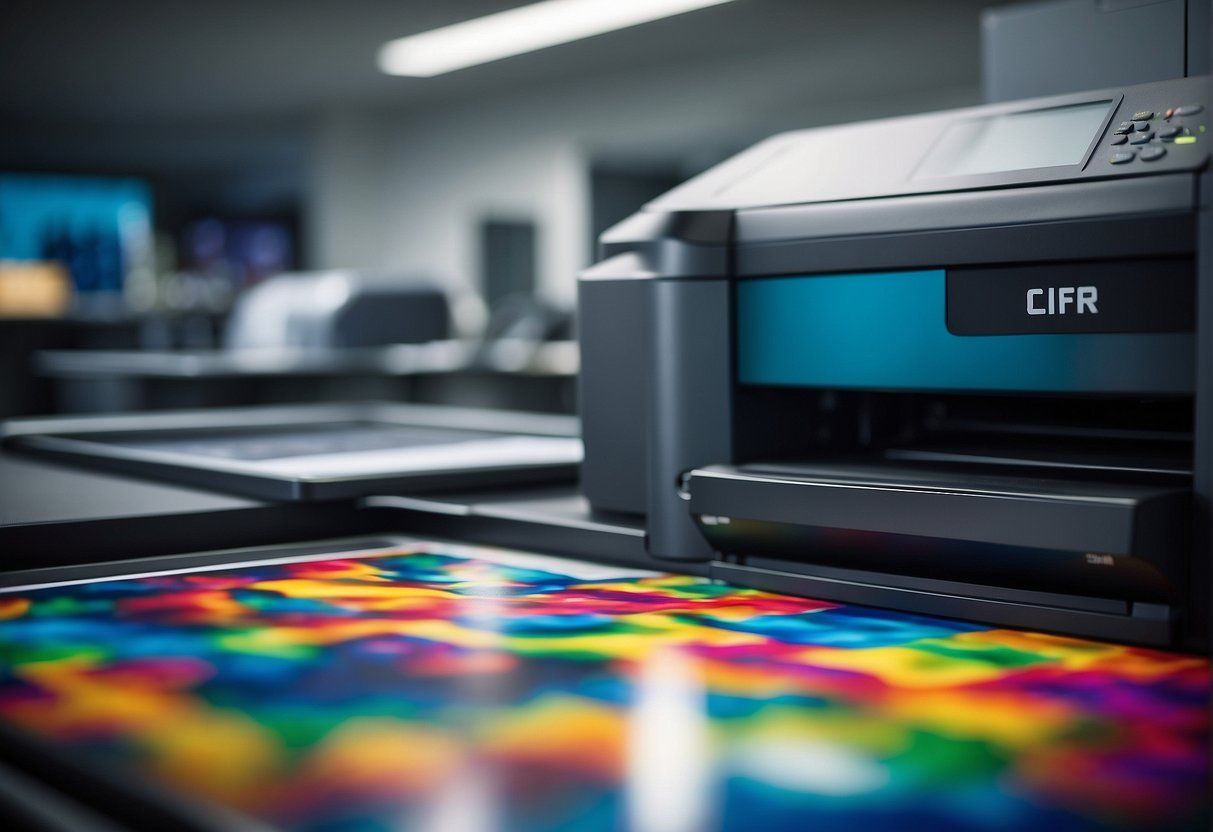
Digital printing has revolutionized the business world, allowing for greater flexibility and efficiency in print-related tasks. It supports various print jobs, ranging from small to large volumes, and is especially adept at handling on-demand and customizable printing needs.
Short and Custom Print Runs
Businesses often require small print runs for targeted marketing campaigns or corporate events. Digital printers excel at these short runs due to their low setup time and cost compared to traditional printing. Thick cardstock printing is also easily managed, making digital printers ideal for creating high-quality, custom business cards, invitations, and promotional materials with minimal waste.
Production and Volume Printing
When it comes to high-volume printing , digital printing technology enables businesses to produce large quantities of prints with consistent quality. Production print technology has made it possible to handle production and volume printing tasks with ease, leading to quicker turnaround times. This is particularly beneficial for jobs like label printing , where sizable orders need to be fulfilled efficiently.
On-Demand and Variable Data Printing
The agility of on-demand printing is a key asset for businesses that need to react quickly to market demands. Print on demand eradicates the need for large inventories, as digital printing can produce books, brochures, and other documents when they are requested. Variable data printing is another innovation in digital printing, allowing businesses to personalize individual prints within a larger batch, producing tailored marketing materials and reducing overall waste.
Challenges and Considerations in Digital Printing
Digital printing technology has revolutionized the way materials are printed, yet it is accompanied by specific challenges and the need for careful consideration in both cost and environmental impact.
Cost Analysis
When assessing digital printing from a cost perspective, two main factors come into play: equipment investment and operating costs. On one hand, the cost of acquiring high-quality digital printing presses is significant. On the other hand, the cost per page for digital printing is typically higher compared to traditional offset printing, especially for high-volume jobs. However, digital printing offers cost savings for short-run jobs due to the lack of setup fees.
- Equipment Investment : High initial investment for sophisticated digital printers.
- Operating Costs : Generally higher cost per page, with reductions in setup costs creating a balance for smaller print runs.
Environmental Impact
Digital printing presents an environmental consideration that primarily revolves around the production of less waste and the use of consumables. The absence of plates and the on-demand nature of digital printing reduces material wastage significantly when compared to traditional methods. In addition, digital printers often use non-toxic and eco-friendly inks, contributing to a smaller carbon footprint. However, the energy usage per page can be higher, and the environmental cost of manufacturing digital printing equipment may impact the overall ecological footprint.
- Waste Reduction : Less waste produced in the absence of extensive setup materials.
- Consumables : Use of non-toxic inks and the possibility for recycling used materials.
Future Trends and Innovations in Digital Printing
Digital printing is experiencing significant transformations, spearheaded by various innovations. HP , a prominent player in the field, continually drives advancements in digital printing technologies. The company’s investment in research and development leads to enhanced printer flexibility and functionality.
Innovations
In the realm of innovations , new ink formulations are emerging that promise greater color fidelity and substrate compatibility. Additionally, advances in 3D printing are anticipated to merge with traditional digital printing, allowing for more intricate and multi-dimensional prints.
- Sustainability : Eco-friendly inks and recycling programs are set to become more prevalent.
- Personalization : Increased data integration will enable hyper-customization in print jobs.
- Speed : Improvements in print heads and drying processes will shorten turnaround times.
Flexibility and Wide Format
The trend toward flexibility reflects in the machinery being developed to handle a broader range of materials, including textiles and synthetic substrates. Wide format printing has seen an uptick in demand due to its ability to produce large-scale graphics with exceptional clarity. The incorporation of AI and machine learning algorithms is improving print quality and reducing waste.
- AI Optimization : Smarter systems for predictive maintenance and color correction.
- Materials : New substrates designed for better print adherence and quality.
The digital printing industry is poised for a future characterized by smarter, faster, and more ecological solutions. From HP’s innovative contributions to the increased utility of wide format prints, the scope for creative and practical applications continues to expand.
Frequently Asked Questions
This section addresses the most common inquiries about digital printing, providing essential insights into how it operates and its capabilities.
How does digital printing differ from traditional offset printing?
Digital printing eliminates the need for printing plates used in offset printing, allowing for direct printing from digital files. This results in faster setup times and cost-effective short runs.
What materials can be used for digital printing?
Digital printing technology can accommodate a wide range of materials, including paper, cardstock, plastic, canvas, fabric, and other substrates suitable for the particular type of digital printer being used.
What are the advantages of using digital printing for fabric production?
Digital printing on fabric offers advantages such as lower setup costs, detailed prints, quick prototyping, and the ability to customize designs. This method is also known for its efficient use of ink and reduced waste.
Which type of ink is best suited for digital printing on garments?
Ink choice depends on the fabric type; however, for garment printing, water-based inks are commonly used due to their eco-friendliness and ability to produce soft prints. Reactive and acid dyes are also popular for natural fibers, while sublimation inks work well on synthetic materials.
How can you ensure high-quality digital prints on paper?
High-quality digital prints on paper can be ensured by using high-resolution digital images, selecting the right paper type for the printer, and employing color management techniques to maintain print accuracy across different batches.
What equipment is essential to start a digital printing business?
Starting a digital printing business requires, at minimum, a high-quality digital printer suitable for the intended print medium, a cutting machine for finishing, computers with design and RIP (Raster Image Processor) software, and possibly a heat press for garment printing.…




